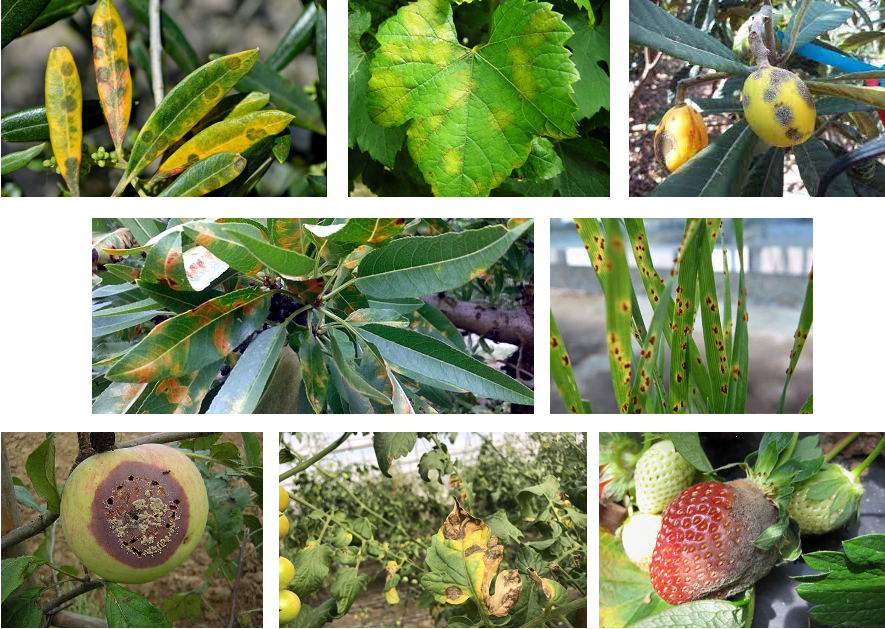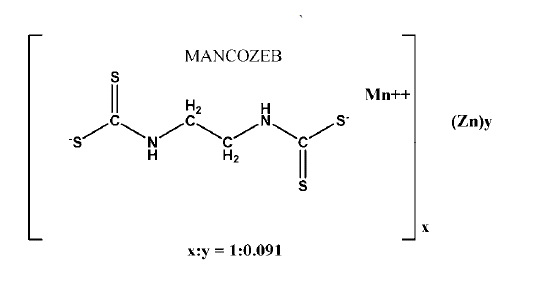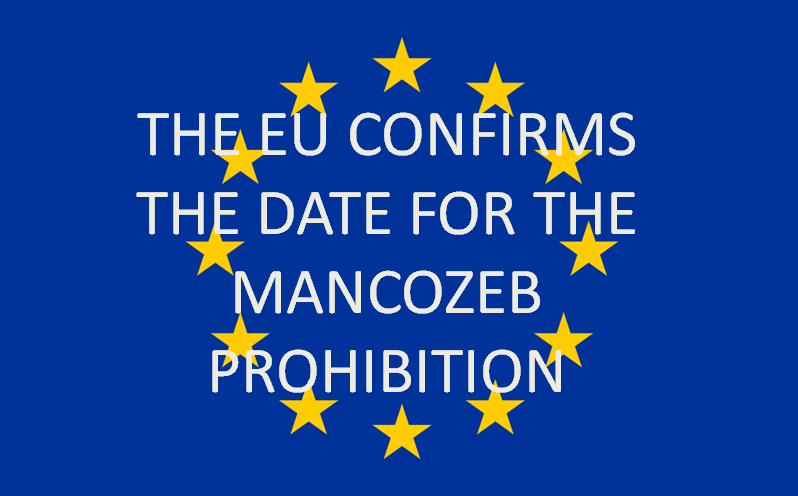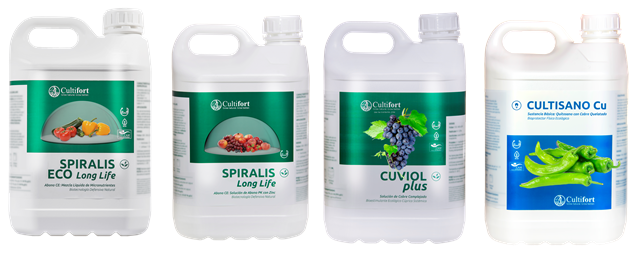Do you know what olive leaf spot, grapevine mildew, cereal rust, Monilinia, and the ocher spot of the almond tree, and Alternaria, Botrytis or mottle have in common in various crops? All are diseases caused by fungi whose action is focused on the colonization of plant tissues, some at the foliar level through necrosis and/or defoliation, while others can also affect the fruits causing their rotting or mummification. In the specific case of Monilinia and Botrytis, the damage occurs directly on the fruits.

Another common characteristic of these (and other diseases not mentioned), is that they are treated with Mancozeb. Apart from its fungicidal action, especially preventive and drying, and useful in numerous crops and especially aggressive mycoses, Mancozeb plays an essential role in the strategies of antiresistance. As a curiosity, it is the third most used active substance in the EU after glyphosate and prosulfocarb (both herbicides).

Until the last year 2020, there were more than 120 records with Mancozeb formulations in Spain. Today and after the meeting of the Standing Committee on Phytosanitary Products of the EU, on October 23, 2020, the green light was given to the proposal of the European Commission not to renew the marketing authorization of Mancozeb in the Community market. Their marketing will be prohibited from January 1, 2021, but a one-year transition period is planned, leaving six months for distributors to sell stocks and another six months for farmers to use them.

This decision leaves agriculture without a tool for fungal control and prevention in the appearance of resistance, as well as to extend the useful life of other more effective fungicides, since, on the other hand, it could open the door to reach the ban of other chemicals and bet on more beneficial methods for the environment, in terms of sustainability and ecology.
According to Carlos De Prada, a communicator specializing in environmental issues for more than 30 years, it is paradoxical that Spain is the EU country that uses the most pesticides, while also having the largest area of organic farming.
This highlights the need to bet on integrated management and cultivation practices that are more respectful with health and the environment, which is costing so much to implement at a practical level, since we continue to have a great dependence on the use of pesticides, in many cases putting other options for the prevention and management of pests and diseases. And it is that as we have mentioned previously, the prohibition of Mancozeb supposes the loss of a tool, but it is not the only tool

This decision leaves agriculture without a tool for fungal control and prevention in the appearance of resistance, as well as to extend the useful life of other more effective fungicides, since, on the other hand, it could open the door to reach the ban of other chemicals and bet on more beneficial methods for the environment, in terms of sustainability and ecology.
According to Carlos De Prada, a communicator specializing in environmental issues for more than 30 years, it is paradoxical that Spain is the EU country that uses the most pesticides, while also having the largest area of organic farming.
This highlights the need to bet on integrated management and cultivation practices that are more respectful with health and the environment, which is costing so much to implement at a practical level, since we continue to have a great dependence on the use of pesticides, in many cases putting other options for the prevention and management of pests and diseases. And it is that as we have mentioned previously, the prohibition of Mancozeb supposes the loss of a tool, but it is not the only tool
Within our innovative R&D line “Natural Defensive Biotechnology” we have developed Spiralis Long Life and Spiralis ECO Long Life. These are fertilizer solutions that include a complex of organic acids and selected peptides, related to green and red algae, of rapid assimilation, which enhance the bioprotective effect against various abiotic stress factors. Spiralis Long Life and its ECO version, promote induction and facilitate the mobilization of precursors of the natural defenses of plants, thus enhancing the synthesis of endogenous molecules, with high defensive capacity and with systemism. In other words, Spiralis activates the natural defense mechanisms of plants and does so through two mechanisms of action:
- Structural changes in the cell walls of plants at the level of their lignification, increasing the synthesis and accumulation of callose and lignin, thus constituting a physical barrier against abiotic stress.
- Induction of the synthesis of endogenous molecules with high defensive capacity such as thionins, PR proteins, and phytoalexins, among others, capable of attacking the cell wall of certain pathogens when they try to colonize the plant. That is, they prevent damage before it occurs.
Spiralis Long Life and Spiralis ECO Long Life are state-of-the-art formulas with molecules highly compatible with plant tissues that allow their total and immediate absorption (between 1 and 8 hours) and whose effect can last several weeks.
On the other hand, and within the same line of “Natural Defensive Biotechnology”, CULTISANO Cu is another of our most innovative products. It is a liquid combination of chelated copper with EDTA along with chitosan. Chitosan is the main derivative of chitin, a natural polymer from the shell of crustaceans, with control properties on the development of certain bacteria and fungi. In addition to activating plant self-defense mechanisms (PR protein synthesis, such as chitinases), from a nutritional point of view, it stimulates plant development, delays senescence, and lengthens productive life.
takes advantage of the synergy between the protective power of copper and the improvement of the antifungal and antibacterial defenses induced by chitosan, in such a way that it provides two fronts of action:
- Internal: copper is an element involved in the self-defense of plants and necessary for many functions.
- External: foliar applications of chitosan create a protective layer on the surface that prevents the colonization of pathogens
Both CULTISANO Cu and Spiralis Long Life and its ECO version, applied 10-15 days before harvesting, help to extend the post-harvest life of the products.
And finally CUVIOL PLUS, a formulation where we have associated copper with lignosulfonates and polysaccharides, to enhance the effect of the mineral element (Cu), causing an increase in the plant’s self-defense against disease prevention.
The use of these products is recommended at a preventive level, both foliar and root, throughout the entire biological cycle of any crop, especially at times when climatic conditions are favorable to the development and proliferation of fungi and bacteria. , and represent a complementary tool against the prevention of certain diseases, such as those mentioned at the beginning of this article.


